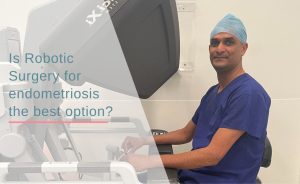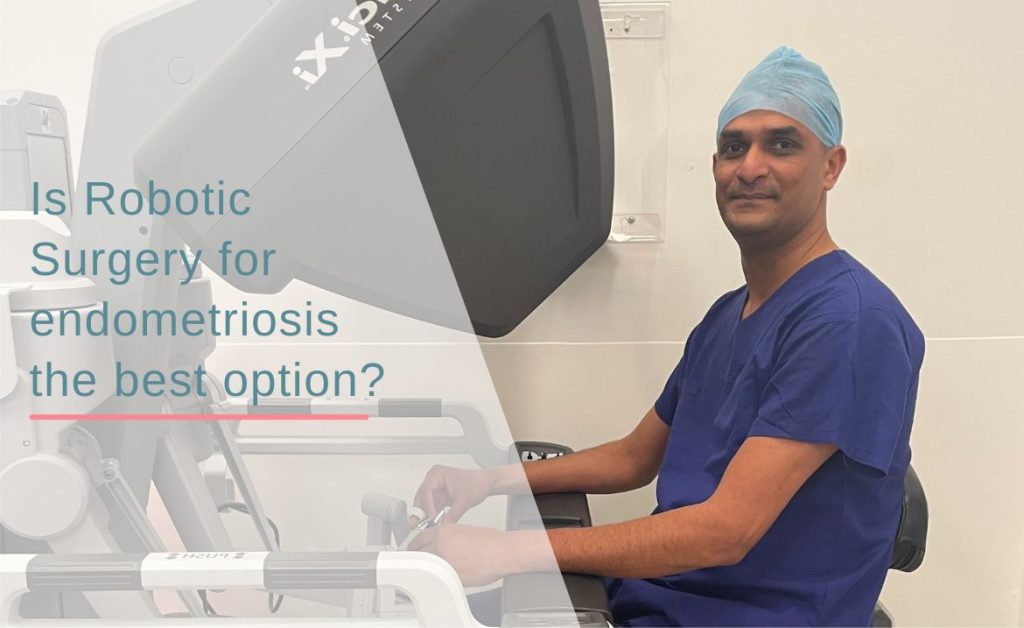
Endometriosis is a chronic condition affecting approximately 1 million Australian females of reproductive age. A common and often painful health condition in which the endometrial tissue that lines the uterus (womb) grows outside this layer and occasionally in other parts of the body.
While endometriosis most often affects the reproductive organs, it may also affect the bowel, bladder, muscles, joints, lungs, and brain on rare occasions.
Although the reason for this is unknown, a common theory is that the backward flow of menstrual bleeding through the fallopian tubes and into the pelvis, also known as retrograde menstruation, may be the reason.
We have put together a guide on understanding endometriosis to help you gain further information and knowledge about endometriosis, its symptoms, diagnosis, and the cause.
What are the treatment options for endometriosis?
There are several surgical treatments are available to treat Endometriosis, including
- hormonal treatment,
- laparoscopy (keyhole surgery),
- laparotomy (open surgery), and
- hysterectomy (in severe cases as a last resort).
Robotic surgery, on the other hand, provides a minimally invasive surgery option leading to better outcomes. Such benefits also include the following:
- High levels of precision and accuracy.
- Small incisions during surgery.
- There is less risk of infections due to the smaller incisions.
- Faster and more comfortable recovery.
- Less pain.
- Quicker return to a daily routine.
With that said, you need to understand how robotic surgery works for the treatment of endometriosis and what to expect.
What is robotic surgery?
As you would have guessed, robotic surgery involves using a robot to assist in endometriosis surgery.
Contrary to common misconception, the robot does not carry out the surgery. The doctor uses it as an instrument. The robotic system translates the doctor’s hand movements in real time while performing the procedure.
Here at Wollongong Obstetrics and Gynaecology, we use the Da Vinci system to perform endometriosis surgery with utmost accuracy and precision.
What to expect during robotic surgery for endometriosis
Now that you know what robotic surgery is, here’s a glance at what to expect during the surgery.
During your robot-assisted endometriosis surgery, your doctor will not stand over you, as he would in a normal surgery. Instead, he will direct the surgery from the robot situated nearby.
While every surgery is different, the general steps involve the following:
- The doctor will make a tiny incision in your body.
- He then inserts a miniature robotic instrument and a camera into your body.
- Your doctor sits at the nearby console directing the procedure by manipulating the controls.
- The robotic instrument then responds to this and translates them into real-time movements in your body.
Are there any risks with robotic surgery for endometriosis?
While we have discussed the ample benefits of robotic surgery for endometriosis, you must understand the potential risks involved to ensure you are comfortable and have full knowledge of the procedure before making a decision.
All surgeries come with potential risks and/or side effects. While Dr Kothari will do everything to minimise these risks, complications may occur. The following are to inform you of the general risks of surgery.
- Excessive bleeding.
- Infection requiring antibiotic treatment.
- Abdominal infection.
- Breathing problems related to anaesthesia.
Is robotic surgery right for you?
We understand that undergoing a surgical procedure is a big decision to make. Therefore, we recommend
- you get all the information you need,
- have all your questions answered, and
- have a thorough knowledge of whether robotic surgery is right for you.
Next steps
If you want further information or wish to book an appointment for diagnosis and treatment, contact our team on 02 4225 1999.

